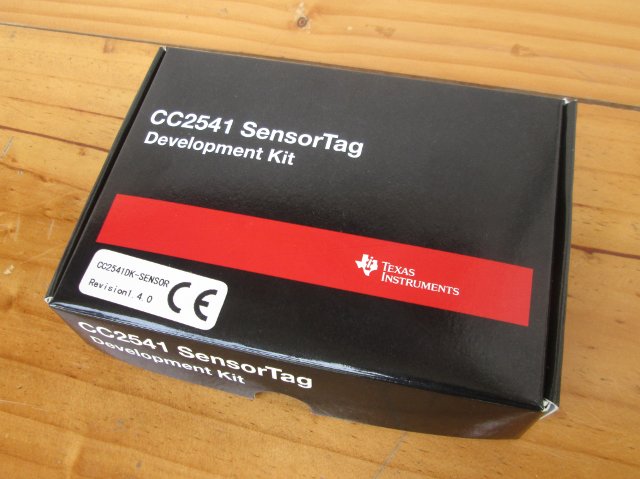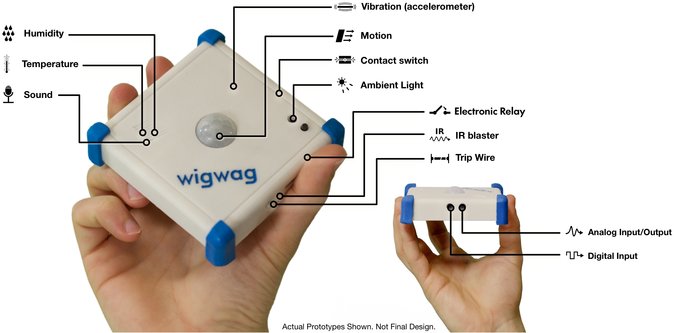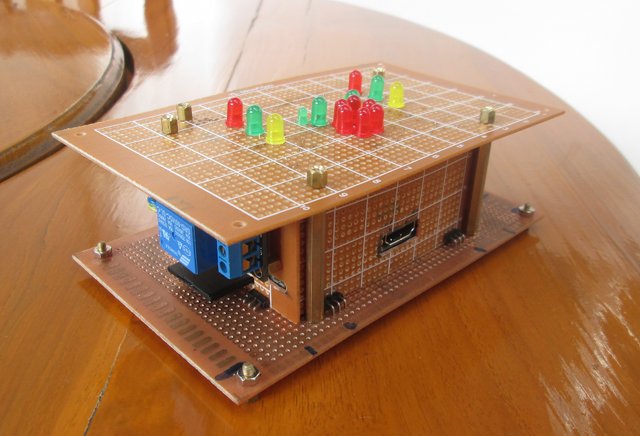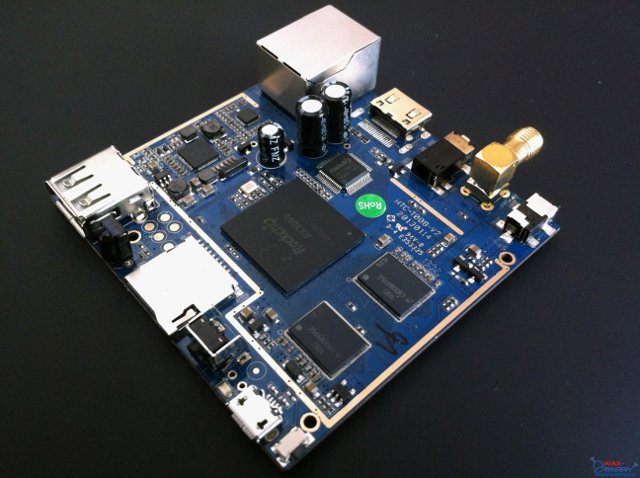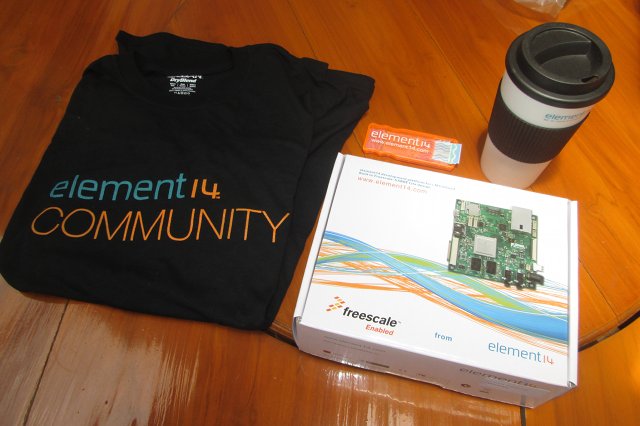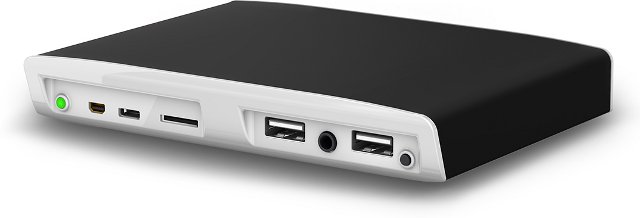Texas Instruments CC2541 SensorTag is a Bluetooth Low Energy (BLE) development kit with 6 sensors (IR temperature, humidity, pressure, accelerometer, gyroscope, magnetometer) mainly destined at mobile application developers for iOS, and soon, Android 4.3. I’m interested in BLE, as I expect most new phones with come with BT 4.0 BLE (aka Bluetooth SMART), and this technology may help bring the Internet of things to life, allowing us to interact with sensors, smart appliance (e.g. light switch)… Since it just costs $25 (including international shipping), I decided to buy it, and give it a try. Today, I’ll show some unboxing pictures, and how to communicate with the kit using the Linux command line. TI SensorTag Unboxing I ordered it at the end of May, and receive it by Fedex on the 18th of July, about 7 weeks later, in the package below. Inside we’ve got a Quick Start Guide for iOS […]
WigWag Simplifies Home Automation, Provides Raspberry Pi and Arduino Shields
WigWag is an home automation kit aiming at simplifying home automation, yet allowing developers to roll their own system via Arduino and Raspberry Pi Shields. Wigwag is currently composed of three devices: WigWag Sensor Block – Universal sensor device with 8 environmental sensors (light, detect motion, sound, temperature, humidity, movement…), 4 control features (relay, IR blaster…), and 2 expansion ports. It can be powered by 4x AA batteries (possibly for up to 1 year), or a USB power adapter. This device runs Contiki OS on Freescale MC1322 MCU (with built-in 6LoWPAN radio). WigWag Relay – Connects WigWag and third party devices to their cloud service, allowing interaction with Internet services, such as email, Dropbox and Twitter. It acts a bit like a central server managing all your WigWag Sensor Blocks or other connected devices such as Phillips Hue light bulbs or Belkin WeMo outlets in your house. IP networks (Wi-Fi & Ethernet) […]
DIY Stripboard/Veroboard Enclosure for Raspberry Pi (Part 2)
Following up my previous post entitled “DIY Modular Stripboard / Perfboard Casing for Raspberry Pi (Part 1)” where I explained how I created an modular enclosure made of perfboard, or the overall concept, I’ve now designed two “smart” sides for the enclosure: a 16-LED stripboard side, and a 5V relay stripboard side. Today, I’ll detail how I’ve done this, with details about electronics, soldering, assembly, the Linux distribution (built with Yocto), as well C programs, HTML page, and (CGI) shell scripts used to light up the 16 LEDs, and control a standard 220V lamp with a relay via my phone’s web browser. 16-LED Stripboard Top Schematics, Soldering, and Testing I had decided to design the top board of the enclosure with several LEDs, 3 LEDs on both side, and a Raspberry fruit (6 red LED) and 2 leaves (4 green LED) in the middle. Before getting started, I did some […]
A Preliminary XBMC Image is now Available for Wandboard, GK802
Yesterday, Stephan Rafin left a message on Wandboard mailing list saying he had released a preliminary (Linux) XBMC image that can run on Wandboard Quad development board. GPU and VPU acceleration work, but this is still work in progress, so if you want something that just works, this is not for you. But if you just want to give it a try, it should work on any hardware based on Freescale i.MX6, such as Wandboard Dual or GK802 mini PC, with some minor modifications. If you’ve got a Wandboard Quad board, the installation is straightforward from a Linux machine: Download the SD card image Decompress it with xz or 7x:
|
1 |
7z x wand.bin.xz |
Dump the resulting to a 2GB or greater microSD card:
|
1 |
dd if=wand.bin of=/dev/sdx bs=4M |
Where /dev/sdx is the sdcard device (e.g. /dev/sdc). You can check with lsblk command. If you’ve got a machine running Windows only, you can use Win32DiskImager for step […]
$10 Rockchip RK2928 Miracast/DLNA Adapter Video Demo
Rockchip showcased an ultra low cost Linux-based Miracast adapter at the Hong Kong Electronics Fair in April, and we learned the device was powered by Rockchip RK2928 with just 16 MB RAM, a small NOR flash, and would just cost around $10. Rockchip demonstrated the device to Charbax at Computex 2013 in early June, and he uploaded the video yesterday. The demo includes showing off Miracast and DLNA support, with the device connected to an HDTV @ 720p. The adapter as a latency as low as 80ms. Rockchip representative explains that as long as it’s below 100ms it’s not noticeable for typical use (but it might be different for games). They used AMOI N828 smartphone for the demo, but Miracast is supposed to work with any Android 4.2 devices supporting Wi-Fi direct, although I’ve read several users’ reports indicating that may not be the case in practice. The price is […]
Waxberry Pi2 Development Board Based on Rockchip RK3066
The other days I announced CubieTech and Olimex were working on low cost Rockchip development boards, but it turns out there’s already one on the market called Waxberrry Pi2, or WB-RK3066, made by Waxberry, a Chinese company. Here are the specifications of this development board: SoC – Rockchip RK3066 dual core Cortex-A9 processor @ 1.6GHz with Mali-400 MP4 GPU System Memory – 1GB DDR3 RAM Storage – 8GB NAND Flash + micro SD card slot USB – Standard USB OTG + Micro USB OTG; Connectivity: 10/100M Ethernet; WIFI 802.11b/g/n (MediaTek MT5931) Bluetoothv2.1+EDR (MediaTek MT6622) Video Output – HDMI + AV Debugging – Serial port Misc – IR Sensor Dimensions – 72mm x72mm The board comes with a Mini HDMI cable, a 5V/2A power supply, a USB Data cable, and a USB-serial board for debug. There’s also a CD with the board schematics, Android 4.1.1 SDK and Linux Kernel 3.x source […]
Freescale SABRE Lite i.MX6 Development Board Unboxing, Wandboard Quad Comparison, and Quick Start Guide
Freescale SABRE Lite is a development board powered by i.MX6 Quad processor with 1GB RAM, SATA, GbE Ethernet, and more. You can get SABRE Lite specifications in my first post about the board. I recently participated in Element14’s “brainteaser” competition for the 4th birthday of their community, where the company offered 9 SABRE Lite development kit to randomly selected participants, and I got lucky. The board can be purchased for $179 from Element14 (MCIMX6Q-SL). I’ll start by showing what in the package, followed by a side-by-side comparison with Wandboard Quad, and show how to getting started by following the Quick Start Guide provided with the board. SABRE Lite i.MX6 Development Kit Unboxing I received the board about 5 days after I provided my address in a large staple carton box with a few goodies. Beside SABRE Lite devkit, the package comes with Element14’s T-Shirt (not my size), double walled tumbler, […]
$99 (and up) Compulab Utilite ARM based Computer Runs Ubuntu or Android
If you’re ready to tinker it’s possible to run Linux in one of the low cost ARM based set-top boxes or mini PCs currently available, although if you need Linux with 3D acceleration and video playback, your only realistic option is to go with solutions based on Freescale i.MX6. Compulab has been developing a mini desktop computer based on Freescale i.MX6 Solo, Dual or Quad that will run either Ubuntu or Android, so you don’t need to mess around to run Ubuntu on cheap ARM hardware. The device is expected to sell for $99 and up starting in August according to Fanlesstech. Compulab Utilite will have the following specifications: SoC – Freescale i.MX6 single / dual / quad core Cortex-A9 up to 1.2GHz, with Vivante GPU, and Video Processing Unit supporting multi-stream 1080p H.264, VC1, RV10, DivX HW decoding System Memory – Up to 4GB DDR3-1066 Storage – 1MB SPI […]


